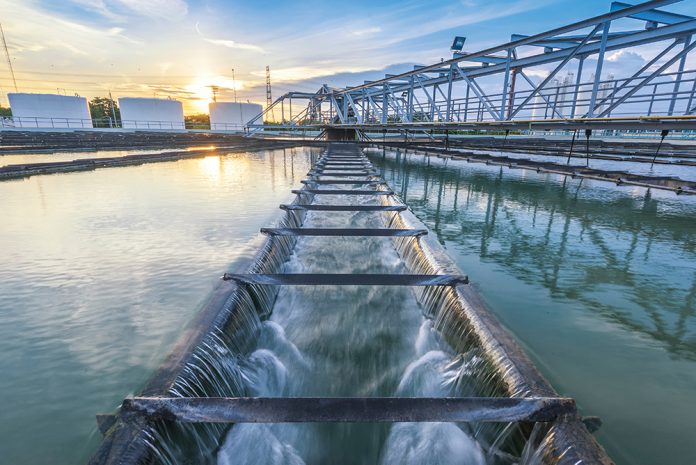By Dr Aderlanio da Silva Cardoso and Kevin Sheeran, of Aqua Enviro.
Phosphorus is an extremely important non-renewable element and critical raw material used in different industries and as fertiliser in agriculture.
High quantities of phosphorus applied in these anthropogenic practices may enter watercourses due to inefficient industrial wastewater and waste management, and via agricultural runoff, leading to excessive eutrophication.
To avoid negative environmental impacts, different wastewater treatment processes have been developed and commercialised to remove and also recover phosphorus. These processes include physical-chemical (e.g., precipitation) and biological processes (e.g., enhanced biological phosphorus removal – EBPR).
The potential for wastewater to be a phosphorus-enriched resource has been recognised, and some European countries such as Switzerland (Sichler et al., 2022) have already implemented a mandatory phosphorus recovery from 2026, to promote the conversion of their wastewater treatment plants to remove and also recover phosphorus using various side-stream process configurations.
Biological processes for phosphorus removal have been commonly used to treat wastewater with low concentrations of phosphorus such as municipal wastewater. These processes consist of phosphorus assimilation by specific bacteria, microalgae, and plants. However, biological phosphorus removal had traditionally been applied within large scale conventional activated sludge (CAS) treatment plant and in optimised configurations of CAS process.
EBPR is traditionally applied within a CAS process, with recent incorporation of EBPR in membrane bioreactors (MBR) (Hei et al., 2022), granular sludge reactors (Hamza et al., 2022), and other wastewater treatment processes have been developed to achieve higher phosphorus removal levels from municipal wastewater. The resulting biological sludge has been considered as a sustainable alternative source of phosphorus, after being converted to biochar for soil amendment.
EBPR is a promising process for promoting a high growth of polyphosphate-accumulating organisms (PAO), which have the remarkable ability to take up and store phosphorus intracellularly as polyphosphate granules, effectively removing it from the wastewater.
The success of EBPR relies on creating specific environmental conditions, such as anaerobic and anoxic zones, where PAOs can thrive. By harnessing the power of microorganisms, EBPR reduces or eliminates the need for chemical dosing and reduces energy consumption (e.g., saving in aeration). Recent developments, including metagenomics for microbial community analysis, integration with other treatment processes, molecular tools for real-time monitoring, mathematical modelling, and the exploration of novel carbon sources have further enhanced the effectiveness and potential applications of EBPR. Advances in microbial community analysis have provided a deeper understanding of the composition and dynamics of microbial populations within EBPR systems, which have further enhanced EBPR performance and applicability. By studying the genetic material present in the wastewater, metagenomics will allow researchers to identify specific PAOs, explore their metabolic pathways, and optimise process conditions to improve phosphorus removal efficiency.
EBPR process can also be used for treating high-phosphorus content from industrial wastewater, anaerobic digestates, sludge centrate and other liquid streams. However, EBPR to treat industrial wastewater is often applied in conjunction with physical-chemical processes (Pronk et al., 2015; Cheng et al., 2023).
Chemical dosing (e.g., using ferric chloride) is frequently used for phosphorus removal method due to its reliability and efficiency. However, the chemical consumption is proportional to the phosphorus concentration, which may lead to an economically and environmentally unviable process due to the high production of sludge and chemical consumption.
As some alternatives to reduce chemical dosing for phosphorus removal, biopolymers such as hydrogel (Schambeck et al., 2021) and adsorbent materials such as ferric-calcium-based biochar have shown promising results with efficiency of around 60% phosphorus removal or higher (Ou et al., 2023). However, most of the tests are still in bench and/or pilot scale, and different institutions have been investing in research to find suitable adsorbent materials for phosphorus removal.
Due to the high demand for phosphorus and its shortages, wastewater phosphorus recovery processes have been the preferable approach to promote sustainable development and food security.
These processes are related to phosphorus removal and recovery such as pre-treatment processes (e.g., filtration process and CO2 stripping), enrichment processes (e.g., osmosis processes), recovery processes (e.g., precipitation), immobilisation processes (e.g., adsorption using biochar). Despite being fully developed and commercialised, the economic feasibility of recovery technologies depends primarily on the phosphorus content present in the wastewater.
Struvite precipitation has been reported as an efficient method for phosphorus recovery from high-phosphorus content liquid streams, via the production of struvite pellets that can be used as slow-release phosphorus fertilisers (Witek-Krowiak et al., 2022).
Thus, the results from the available wastewater treatment technologies show that it is possible to not only remove, but also recover phosphorus from wastewater to obtain a phosphorus-containing added value product. The wastewater sector and governmental bodies have already recognised the importance of seeing wastewater as a source of phosphorus and have invested in the development of technologies for phosphorus recovery.
References
CHENG, L. et al., (2023). Journal of Hazardous Materials, 454, 131472.
HAMZA, R. et al., (2022). Case Studies in Chemical and Environmental Engineering, 5, 100173.
HEI, S. et al., (2022). Journal of Cleaner Production, 376, 134237.
OU, W. et al., (2023). Journal of Cleaner Production, 383, 135468.
PRONK, M. et al., (2015). Water Research, 84, 207-217.
SICHLER, T. C. et al., (2022). Environmental Sciences Europe, 34:84.
WITEK-KROWIAK, A. et al., (2022). Bioengineered, 13, 13474-13506.




